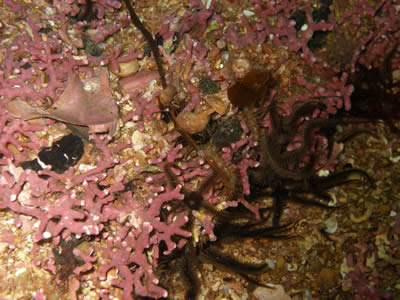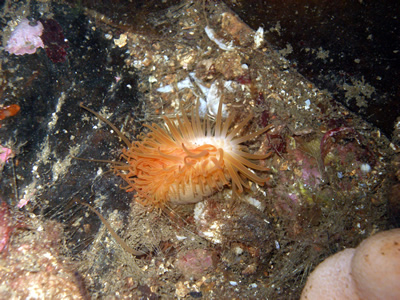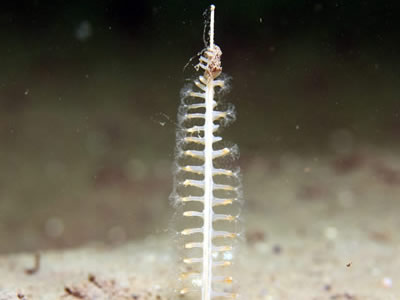Creeling and the EnvironmentThe waters around Scotland’s coast are
home to a complex and beautiful array of marine life. Habitats such as maerl
beds and flame shell reefs are of international as well as national importance,
and it is imperative that they are protected. Creel fishing can be carried out
in areas that support fragile habitats and the species that depend on them
without destroying them.
SCFF are committed to working with science and environmental groups to
ensure that the Scottish creel fishery is sustainable.
Maerl beds

Maerl is a form of seaweed known as coralline algae. It is rosy pink when alive,
but more familiar to the public in its bleached white form when its lime rich
skeleton washed up as sand on the Scottish coast. Maerl forms beds which provide
an important habitat for juvenile fish and shellfish, especially scallops which
have a high commercial value. Maerl is extremely vulnerable to physical damage.
Flame shell reef

The flames shell (Limaria hians) grow in ‘nests’ submerged in the substrate.
Great numbers of these nests can be found together in beds that stabilise and
raise the seabed, creating important habitat for spat fall, and a secure hiding
place for invertebrates and the juvenile stages of fish and crustaceans. Large
beds are now rare due to mechanical disturbance, the best beds can be found off
the west coast of Scotland.
Sea Pens

Sea pens of different species are often found in the same soft muddy habitats
that are home to prawns.
For any queries regarding the SCFF or information on how to join please
Contact Us
| 
